
Lima’s Plaza de Armas, also called Plaza Mayor, is home to the Cathedral of Lima, the Archbishop’s Palace, the Government Palace and the Municipal Palace of Lima (city hall).
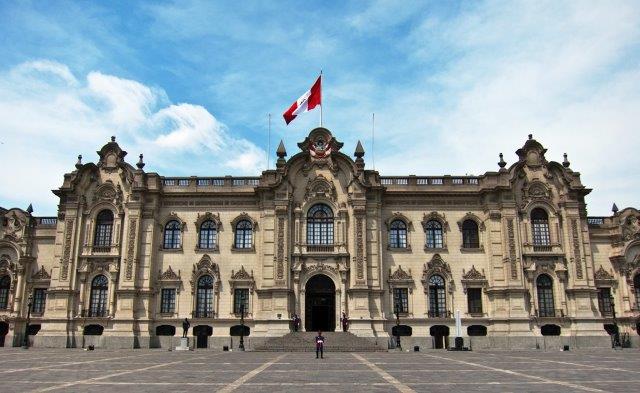
Soldiers in dress uniform stand guard in front of the Government Palace, which sits far behind iron gates. Francisco Pizarro lived on this same lot, although in a different building, and was assassinated here in the country’s first coup d’etat. The colony was subsequently governed by viceroys who resided here, and it is now the official residence of the president of Peru.
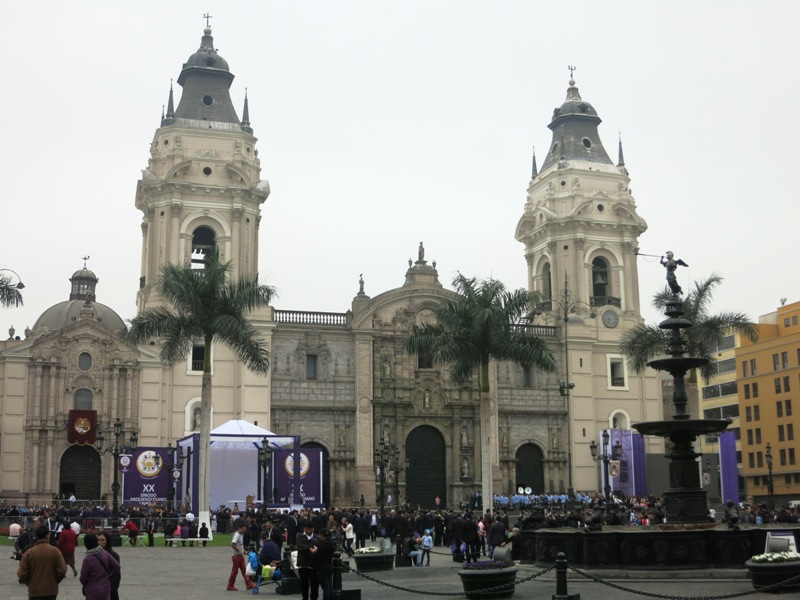
The Cathedral of Lima was built to convey the power of the Church in the lives of colonists and natives. In addition to an awe-inspiring building, the cathedral’s museum showcases one of the city’s best collections of religious artwork. Francisco Pizarro lies in a tomb at the church’s entrance.

The neo-colonial building with the carved wooden balcony is the Archbishop’s Palace, the headquarters of the Lima archdiocese. In Peru’s first century as a Spanish colony, the clergy were reluctant to venture out of the urban centers to preach to the masses of indigenous Peruvians, preferring to stay inside their urban enclaves and service the Spanish elite. In the 17th century, however, the Church put a new focus on conversion, mandating clergy to speak Quechua or Aymara. Converting the former Inca colonies to Christianity was a massive endeavor planned from this palace.
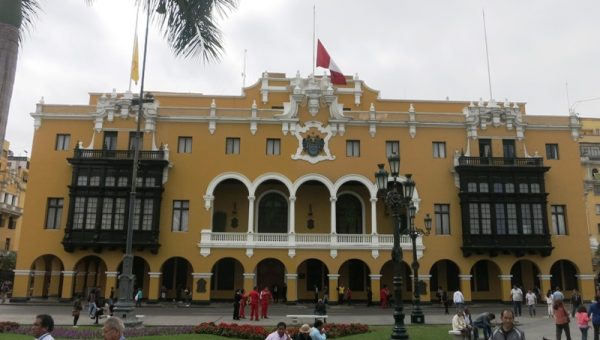
The Municipal Palace of Lima, or city hall, features both the original Charter of Lima signed by Francisco Pizarro and the national Declaration of Independence, but the building is not open to the public. In this picture, the flag of Peru is lowered in honor of three firefighters who lost their lives battling a blaze in El Agustino.
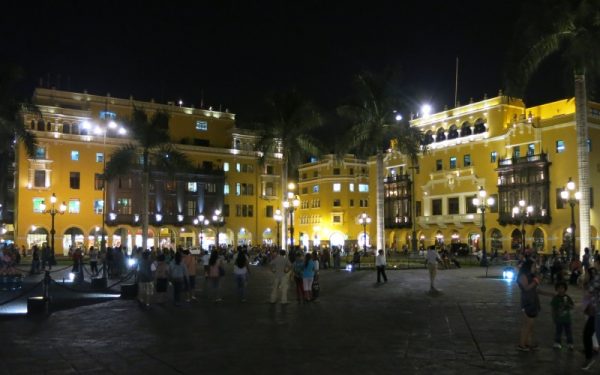
Just south of the Municipal Palace is the Club de la Union, a historic society of Peru’s elite movers and shakers who planned national policy since the 19th century.
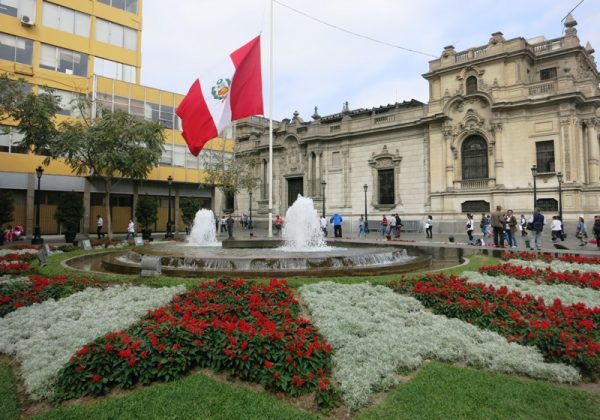
Above is a fountain on the northwest corner of the plaza.
Things to Do

Bus tours of the historic city center leave from the south side of this plaza every half hour or so. Look for long red buses. Some will take you to the top of Cerro San Cristobal, the highest point in Lima with a panoramic view of the city. But the view isn’t the best. A cable car is currently under construction, and has been for years. Another way to visit is by hiring a taxi.
Northwest of the Government Palace is Casa de Aliaga, a colonial-style house preserved by the Aliaga family for hundreds of years. In fact, it claims to be the oldest home in all the Americas. You must make reservations in advance.
There are too many museums nearby to list. The most popular include the San Francisco Catacombs, Santo Domingo Convent, Inquisition Museum and the Central Reserve Bank of Peru Museum. The Alameda Chabuca Granda is a pedestrian-only entertainment area located behind the Government Palace.
Location and info
Lima’s Plaza de Armas is located at the northern tip of the historic city center, backing up to the Rimac River. Any taxi driver will know how to get there. You can also take the Metropolitano to the Jiron de la Union station.
One comment